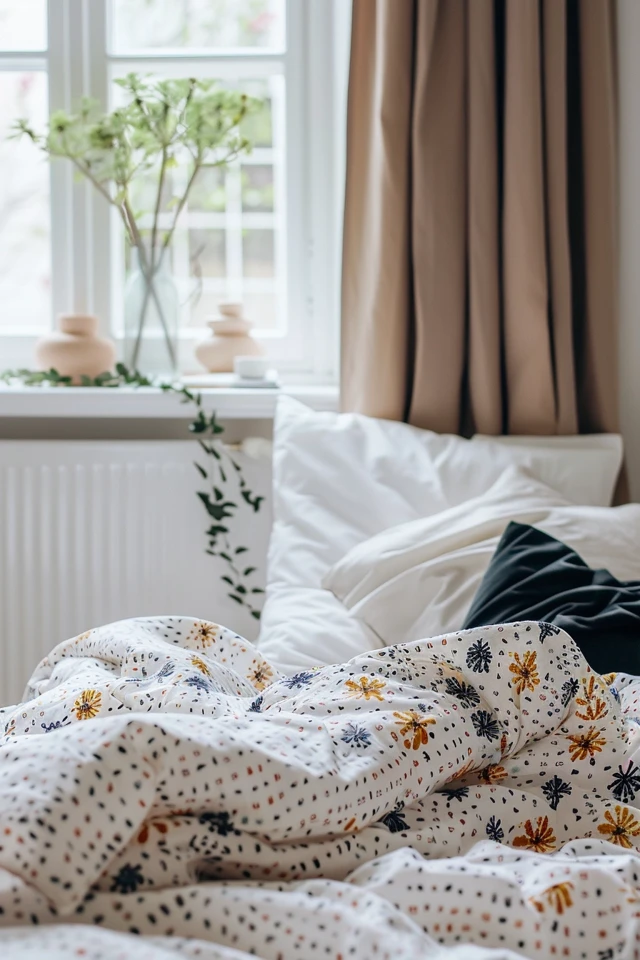I’m sure many of us have experienced the frustration of finding our once smooth and cozy bed sheets covered in those annoying little fuzz balls. This common issue, known as pilling, occurs when the fabric becomes worn and fuzzy due to friction and other factors. But fear not! There are ways to prevent or minimize pilling and maintain the quality of your sheets.
Factors such as poor weave methods, short fibers, low thread count, intense heat, chemicals, and excessive abrasion can contribute to sheet pilling. However, by following proper bed sheet aftercare, using non-toxic products, and opting for materials that are less prone to pilling, you can prolong the lifespan of your sheets and keep them in top condition.
One of the key factors in preventing pilling is choosing high-quality sheets. Materials like long-staple cotton, TENCEL™ Lyocell, silk, and linen have longer, stronger fibers that are less likely to break and tangle, reducing the risk of pilling. By investing in sheets made from these materials, you can enjoy a restful sleep without worrying about pilling.
In this article, I will share some valuable tips and techniques to prevent sheets from pilling, as well as highlight the best bed sheet materials that are less prone to pilling. Let’s dive in!
Key Takeaways:
- Follow proper aftercare routines for your bed sheets, including using cold water, gentle washing cycles, and avoiding harsh detergents.
- Consider using dryer balls to speed up drying time and reduce friction.
- Choose high-quality sheets made from long-staple cotton, TENCEL™ Lyocell, silk, or linen for better durability and resistance to pilling.
- Avoid materials with short fibers, low thread count, and poor weave methods, as they are more prone to pilling.
- By taking preventative measures and investing in quality materials, you can prolong the lifespan of your sheets and maintain their original condition.

How To Prevent Sheets From Pilling: Tips and Techniques
To prevent pilling sheets and ensure a prolonged sheet lifespan, proper aftercare routines should be followed. By implementing these anti-pilling bedding care techniques, you can maintain the quality of your sheets and enjoy their softness for a longer period of time.
1. Wash Sheets with Cold Water
When laundering your sheets, opt for cold water instead of hot. Hot water can weaken the fibers of the fabric, making them more prone to pilling. Cold water helps to prevent the breakdown of the fabric and preserves its quality.
2. Choose a Gentle Cycle
Set your washing machine to a gentle cycle. Aggressive washing can cause unnecessary friction and increase the risk of pilling. A gentle cycle will reduce the strain on the fabric and minimize the formation of those pesky little pills.
3. Line Dry or Use Low Heat
Whenever possible, avoid using high heat when drying your sheets. Instead, opt for line drying or use the lowest heat setting on your dryer. Excessive heat can weaken the fibers and lead to pilling. By drying your sheets gently, you can prevent fabric pilling and preserve their original softness.
4. Avoid Harsh Detergents
Choose a mild, non-abrasive detergent for washing your sheets. Harsh detergents can strip away the natural oils in the fabric, making it more susceptible to pilling. Look for detergents specifically designed for delicate fabrics to maintain sheet quality and prevent pilling.
5. Consider Dryer Balls
Using dryer balls in the dryer can help to speed up drying time and prevent fabric from tangling and pilling. These small, spherical objects create separation between the sheets and reduce friction, resulting in fewer pills.
When it comes to choosing sheets that are less likely to pill, opt for high-quality materials such as long-staple cotton, TENCEL™ Lyocell, silk, or linen. These materials have longer and stronger fibers that are less likely to break and tangle over time. By following these preventive bedding pilling prevention techniques, you can prevent pilling sheets and prolong the lifespan of your bed sheets.

Best Bed Sheet Materials to Avoid Pilling
When it comes to selecting bed sheets that are less prone to pilling, certain materials excel in durability and resistance. Long-staple cotton, such as Pima and Egyptian cotton, is widely renowned for its strength and longevity. The fibers of these cotton varieties are longer, minimizing the chance of pilling and ensuring your sheets maintain their quality over time.
Another exceptional material is TENCEL™ Lyocell, which not only resists pilling but also offers a luxurious smoothness and soft feel. This eco-friendly textile is derived from sustainably sourced wood pulp and is a great choice for those seeking an anti-pilling bedding option.
In addition to cotton and TENCEL™ Lyocell, silk and linen sheets are also less likely to pill. Silk, prized for its lustrous appearance and smooth touch, comes from the strong, natural fibers produced by silkworms. Linen, on the other hand, is made from flax fibers that are not only resistant to pilling but also highly breathable, making it an excellent choice for warm sleepers.
For those looking for an eco-friendly option, bamboo sheets woven in a diagonal twill weave provide strength and anti-pilling properties. Bamboo fibers are more durable and resistant to wear, making them an excellent choice for preventing fabric pilling on sheets while maintaining sheet quality.


